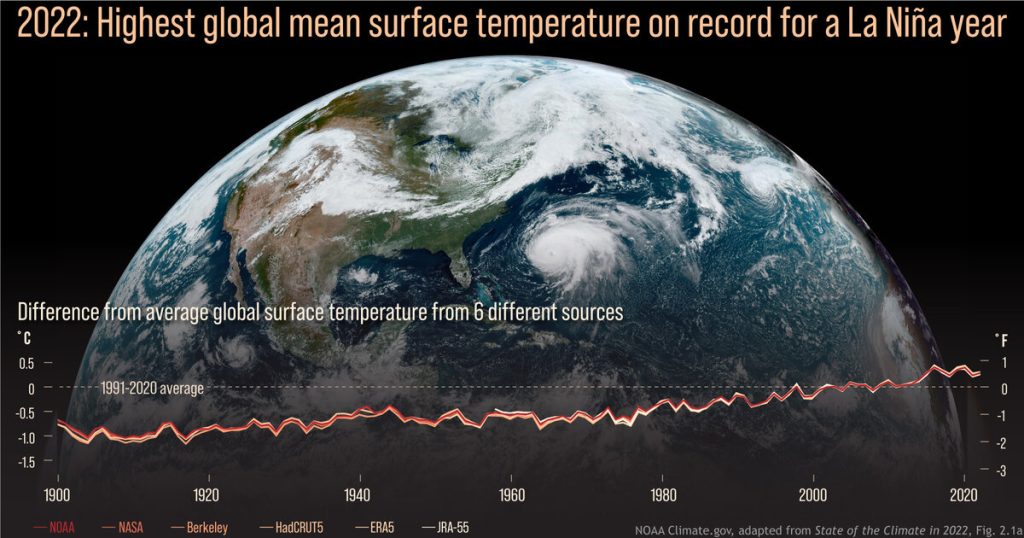Earlier this week, NOAA released the latest annual State of the Climate report for 2022. It contains a comprehensive summary of the climate of 2022, including the impacts of the third year of La Nina and the cooling impacts of the Hunga Tonga eruption on the stratosphere, which some think have impacted the very warm ocean temperatures in 2023. You can read a summary of the report at https://www.climate.gov/news-features/understanding-climate/highlights-state-climate-2022 and find a link to the full report, which was based on contributions from 570 scientists in 60 countries. According to my friend and colleague NCEI Director Deke Arndt, “This report is a truly international effort to more fully understand climate conditions around the globe and our capacity to observe them. It is like an annual physical of the Earth system, and it serves present and future generations by documenting and sharing data that indicate increasingly extreme and changing conditions in our warming world.”

Graphs of yearly global surface temperature compared to the 1991-2020 average from 1900 to 2022, based on six different temperature records. Despite small differences among the records from year to year, all show a warming trend. The background image is a GOES-16 satellite image from September 22, 2022. NOAA Climate.gov image, adapted from Figure 2.1a in State of the Climate in 2022.